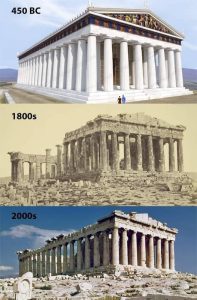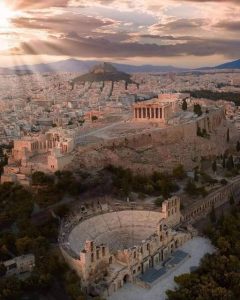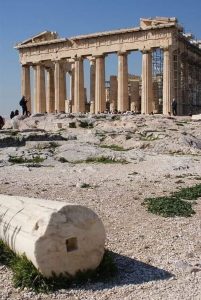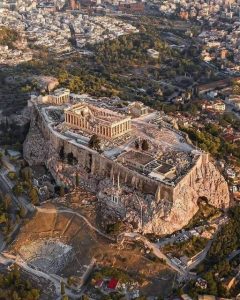Perched atop a rocky outcrop above the city of Athens, the Acropolis stands as a monument to the glory of ancient Greece. Known for its architectural precision and its historical significance, the Acropolis is not only a symbol of ancient Greek art and culture but also a beacon of inspiration for Western civilization. The recent photograph captures the iconic Parthenon under a clear blue sky, surrounded by remnants and restoration efforts that tell a story of both ancient splendor and ongoing preservation.
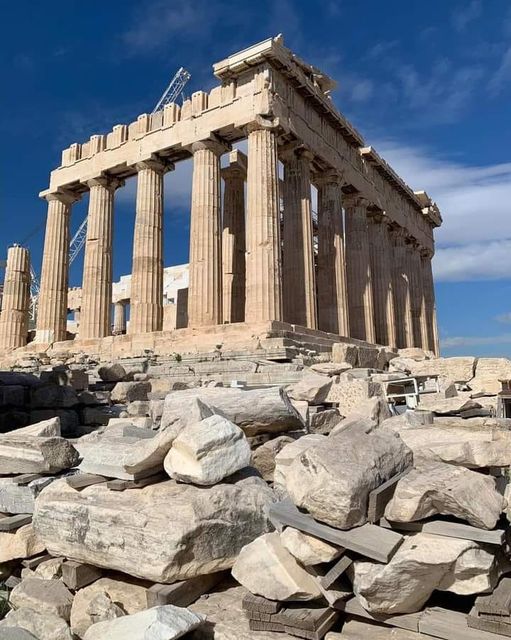
The Acropolis, meaning “high city” in Greek, has served various roles throughout its long history. Originally a place of refuge, it was transformed in the fifth century BCE under the leadership of Pericles, who envisioned it as a testament to the political and cultural achievements of Athens. The Parthenon, the most famous structure on the Acropolis, was dedicated to Athena, the city’s patron goddess, symbolizing the wealth, power, and artistic advancement of Athens at its zenith.
Today, the Acropolis remains a profound educational site and a pivotal tourist attraction that draws millions of visitors from around the globe. The Parthenon itself, despite the damages it has suffered through centuries of war, looting, and natural disasters, continues to be a powerful example of Classical Greek architecture. Its Doric columns and exquisite sculptural details, such as the metopes and friezes that depict various mythological battles and processions, continue to awe and inspire.
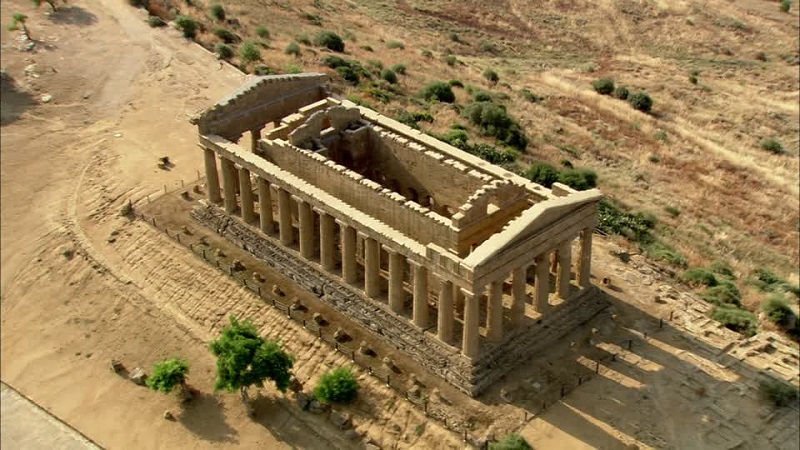
In the foreground of the photograph, the scattered marble blocks and fragments of columns may seem like mere rubble to some, but to historians and archaeologists, they are precious links to the past. These remnants are painstakingly preserved and studied to help experts understand more about the construction techniques and artistic practices of the ancient builders.
Moreover, the ongoing restoration projects, visible in the background with scaffolding around parts of the temple, highlight the modern efforts to conserve and restore this invaluable site. These projects involve complex engineering tasks and meticulous attention to historical detail, ensuring that every piece of restored marble adheres to the original craftsmanship and integrity of the structure.

The Acropolis is more than just an archaeological site; it is a symbol of enduring strength and resilience. It represents the intellectual and artistic achievements that are the cornerstone of Western culture. For the people of Greece, it stands as a proud reminder of their heritage and an emblem of their nation’s long, storied past.
Visiting the Acropolis provides a profound connection to history, offering insights not only into Greek mythology and history but also into the ideals of beauty, harmony, and democracy that have shaped human consciousness for millennia. As we look at images of the Acropolis against the backdrop of modern Athens, we are reminded of the dynamic continuity between the past and the present, between ancient achievements and contemporary pursuits of knowledge and preservation.
